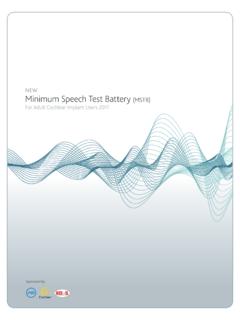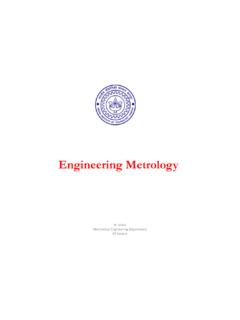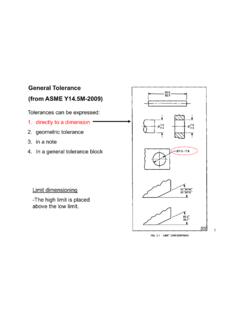Transcription of General Guide To Contract Types For Requirements Officials
1 Acquisition Guide Chapter (March 2008) General Guide To Contract Types For Requirements Officials Acquisition Guide Chapter (March 2008) 2 TABLE OF CONTENTS I. Introduction .. 3 II. The Selection of Contract 3 III. Contracting Officer Responsibility for Selecting the Type of Contract .. 4 IV. How the Statement of Work Influences the Contract Type .. 4 V. Categories of Contract Types .
2 5 VI. Contract Type Preference .. 5 VII. Motive .. 5 VIII. 6 IX. Contract Type 6 A. Compensation 6 B. Structure 6 X. Risk Factors Considered In Determining the Appropriate Type of 7 XI. Detailed Information on Each Contract 8 XII. Contract Type 9 A. Firm-Fixed-Price (FFP).. 10 B. Fixed Price with Economic Price 11 C. Fixed Price Incentive (FPI).. 13 1. Fixed Price Incentive (Firm Target).. 15 2. Fixed Price Incentive (Successive Targets).. 17 D. Fixed Price with Provision for 19 (Prospective Price Redetermination at Stated Time of Times during Performance) E.
3 Fixed Price with Provision for 21 (Retroactive After Completion) F. Firm-Fixed-Price Level of Effort Term (FP/LOE).. 22 G. 23 H. Cost 24 I. 26 J. Cost-Plus-Award-Fee (CPAF).. 28 K. Cost-Plus-Fixed-Fee (CPFF).. 30 L. Performance Based 32 M. Indefinite- 34 N. 35 O. 36 P. Time and Materials (T&M) and Labor Hours (LH).. 37 Q. Letter 38 R. Basic Agreements (BA).. 40 S. Basic Ordering Agreements (BOA).. 42 T. Blanket Purchase Agreement (BPA).. 44 U. Task and Delivery 46 V. Government Wide Acquisition Contract (GWAC).
4 47 W. Federal Supply Schedule 49 Acquisition Guide Chapter (March 2008) 3 General Guide TO Contract Types FOR Requirements Officials I. Introduction First there must be an understanding of what a Contract is. A Contract is a mutually binding legal relationship obligating the seller to furnish the supplies or services and the buyer to pay for them. It includes all Types of commitments that obligate the Government to an expenditure of appropriated funds and that, except as otherwise authorized, are in writing.
5 Thereby, a Contract sets up arrangements that are clear and certain regarding the relationship and performance Requirements of the parties involved. In the case of a government Contract , when an agency desires to procure goods and services, a Contract is the appropriate method of mutually binding the parties to their promise. The Federal Acquisition Regulations (FAR) governs the use of the many Types of government contracts. The purpose of this document is to provide General guidance regarding Contract Types as described under FAR Part 16.
6 This Guide is not intended to supersede information contained in the FAR. There are different meanings associated with the term Contract type. In one sense, it signifies different compensation arrangements, of which there are many. However, most compensation arrangements fall into two major groups: cost reimbursement or fixed price. In another sense, the term Contract type is used to signify differences in Contract structure or form. For example, this structure could be a letter Contract , purchase order, performance-based, completion, or term Contract .
7 Finally, the term Contract type is used to identify an intended end purpose. Examples of this would be contracts such as, management and operating, research and development, and supply. Consistent with the FAR, this Guide focuses on compensation and Contract structure to describe Contract type. However, none of these connotations is mutually exclusive, as a Contract represents each of these terms. Together, these Contract Types will help ensure the success of a Contract . A wide selection of Contract Types is available to the Department of Energy (DOE) and its contractors to provide flexibility in acquiring the large variety and volume of supplies and services needed by DOE to fulfill and support its mission.
8 However, no single Contract type is right for every contracting situation. Selection must be made on a case-by-case basis, considering many programmatic, performance and financial factors. The goal is to select the Contract type that will result in the most optimum business arrangement between the parties. II. The Selection of Contract Type In Federal procurement, the Government sets out the type of Contract in the terms and conditions of the solicitation. In non-competitive procurements and in a limited number of negotiated procurements, the contractor may be given an opportunity to propose different Types of contracts than contemplated by the Government.
9 The selection of the Contract type should give the contractor an incentive to perform efficiently and effectively. Thus, selecting the appropriate Contract type affects the Government s ability to obtain fair and reasonable prices. Acquisition Guide Chapter (March 2008) 4 III. Contracting Officer Responsibility for Selecting the Type of Contract The Contracting Officer is responsible for selecting the appropriate Contract type. However, in most instances the Requirements initiator will be responsible for drafting the Statement of Work (SOW) and other technical/performance Requirements .
10 Requirements personnel, familiar with the technical Requirements and degree of uncertainties in the SOW, are in an important position to provide the Contracting Officer with information critical to the Contract type selection. Thus, their responsibilities are viewed as an integral part of the procurement process. Expenditures for goods and services is seen not simply as the business of contracting personnel, but also that of the requirement Officials who initiate and use the goods and services obtained. IV. How the Statement of Work Influences the Contract Type The SOW is the key element in deciding the selection of a Contract type.


















